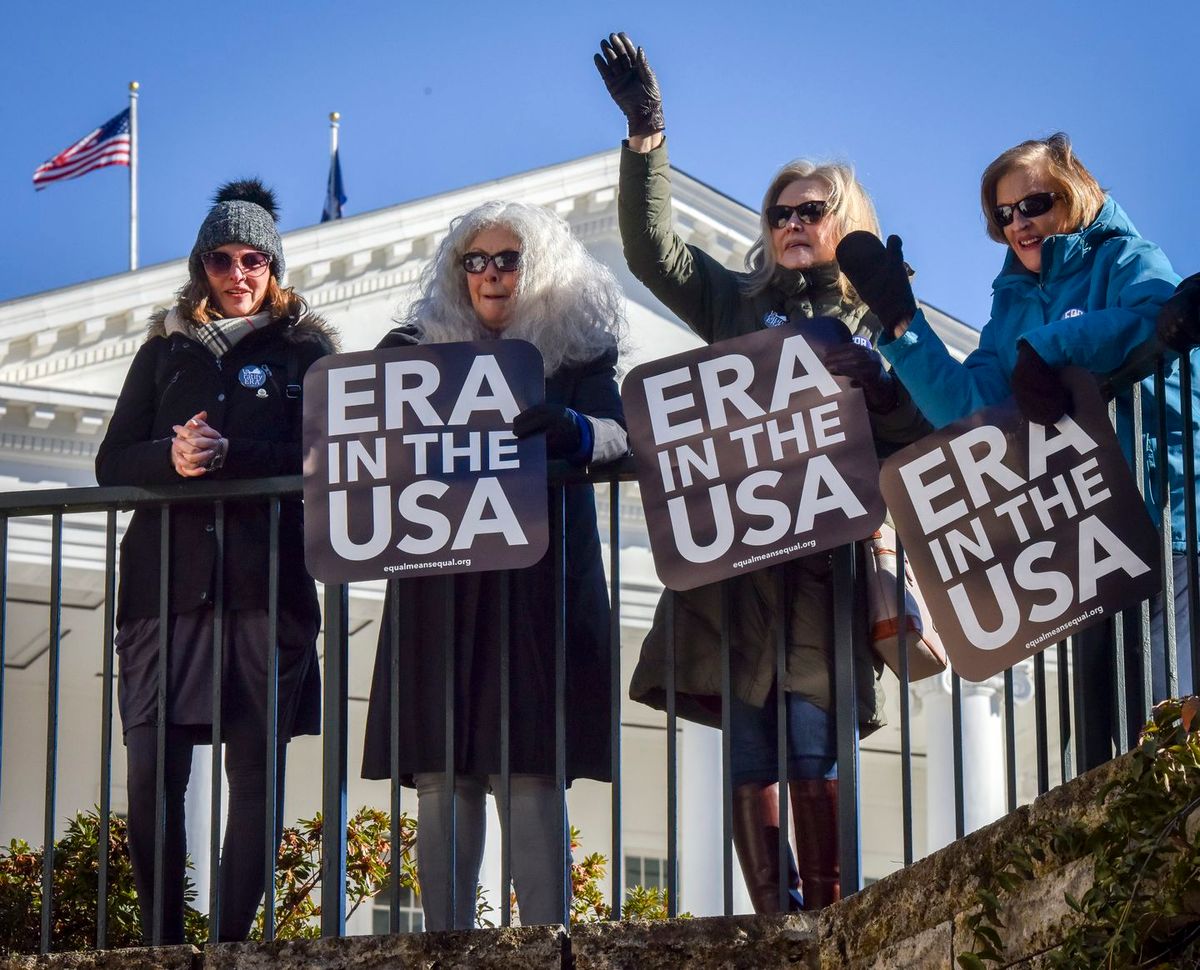Virginia set to be 38th state to ratify the Equal Rights Amendment but its future is uncertain

A few minutes every morning is all you need.
Stay up to date on the world's Headlines and Human Stories. It's fun, it's factual, it's fluff-free.
A historic day in Virginia’s state legislature has set the table for the state to become the 38th state to ratify the Equal Rights Amendment (ERA). In order for the US Constitution to be amended, it has to be ratified by at least three-fourths of the states in the US, or approximately 38 of the 50 states.
Virginia’s ratification would result in the ERA having the support needed for it to be added to the US Constitution.
However, the amendment, which was originally approved by the Senate in 1972, has additional challenges. Although there are still means by which the amendment could be officially adopted, the Department of Justice (DOJ) has already indicated that the ratification would not be legally binding.
Historic shifts in Virginia’s General Assembly
On November 5, 2019, Virginia held an election for its state House and Senate that resulted in the Democratic Party winning majorities in both legislative bodies, known together as the General Assembly.
The 2018 midterm elections prior to that had resulted in the victory of Democrat Ralph Northam in the governor’s race. As a result of their most recent electoral victory, the Democrats gained complete control of Virginia for the first time since 1993. The Republican Party had partial or complete control of Virginia for the approximately 26 years that led up to the 2019 election.
One party control over all major bodies of government in a state is known as a “trifecta.”
Virginia had previously been known as a swing state in US general elections, meaning that it would “swing” back and forth in its support for Republican and Democratic legislators.
On Wednesday, the General Assembly convened for the first session of 2020. In doing so, it established a few historic firsts.
Eileen Filler-Corn became the first female Speaker of the House in the House’s 400-year history while Charniele Herring became the first female House majority leader. Suzette Denslow, meanwhile, was elected the House’s first female clerk.
Ratifying the ERA was one of the first things on the political agenda for Virginia’s Democratic-controlled General Assembly. There is believed to be a good chance that the state will ratify the ERA, making it the 38th state to do so. Nevada and Illinois ratified the ERA in 2017 and 2018, but the most recent state to ratify the amendment before them was Indiana in 1977.
What is the Equal Rights Amendment?
The Equal Rights Amendment is a proposed amendment to the US Constitution. It would be the 28th amendment if adopted. The ERA is intended to ensure equal protection under federal law regardless of sex. It is split into the following three sections:
Section 1. Equality of rights under the law shall not be denied or abridged by the United States or by any State on account of sex.
Section 2. The Congress shall have the power to enforce, by appropriate legislation, the provisions of this article.
Section 3. This amendment shall take effect two years after the date of ratification.
The amendment, as it exists in its current form, was first introduced to the US House of Representatives in 1970 by Democratic Rep. Martha Griffiths. It was passed in the House with bipartisan support in 1971 and again in the Senate in 1972.
The fight for the ERA
Though the ERA had bipartisan support in the United States in the 1970s, including from President Richard Nixon, it has since come to face more opposition.
Those in favor of the amendment believe it can offer greater legal protection for women in cases of sexual violence and domestic violence and that it will officially codify equal pay and rights on a federal level.
In the 1970s, conservative constitutional lawyer Phyllis Schlafly helped lead the fight against the ERA. Schlafly argued that the amendment would undermine traditional families and lead to women fighting one another in the military and in gender-neutral bathrooms.
Current opponents of the amendment often cite the 14th Amendment – passed in 1868 following the American Civil War – and its “Equal Protection Clause” as evidence that the ERA is, in their view, redundant. The 14th amendment granted citizenship and equal rights to former slaves and all people born in the country.
The ERA deadline
When the ERA was first passed in 1972, it was given a seven-year deadline to achieve ratification from three-fourths of the states. Only 35 states had ratified the amendment by 1979 and, as a result, the current Department of Justice’s Office of Legal Counsel has released a legal opinion stating that recent ratifications are non-binding.
The opinion, released on January 6, states that Congress legally established a deadline for ratifications and that “because that deadline has expired, the ERA Resolution is no longer pending before the States.” As noted in the Legal Counsel’s opinion, Congress originally extended the deadline by three years, to 1982, but the ERA still hadn’t been ratified by the necessary number of states by that date.
Possible legal pathways for passing the ERA
The expired deadline has not kept proponents of the ERA from pursuing various legal pathways and loopholes to push the amendment across the finish line.
One such loophole proponents have noted is that the language referring to the deadline is in the preamble to the amendment, not the text of the amendment itself, and that therefore it should not be considered part of the ERA.
Since Congress was originally responsible for placing a deadline on the amendment, it’s been proposed that the current Congress could vote to retroactively remove the deadline, essentially negating the issue.
However, even if a pathway for validating the state ratifications is found, the ERA faces an additional hurdle. Five states – Nebraska, Tennessee, Idaho, Kentucky, and South Carolina – voted in the 1970s to rescind their earlier ratifications of the amendment.
There is no legal precedent for rescinding the ratification of an amendment, so it isn’t clear whether those states’ original ratifications would remain valid.
Have a tip or story? Get in touch with our reporters at tips@themilsource.com




Comments ()